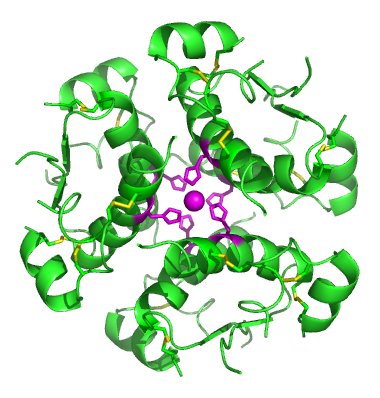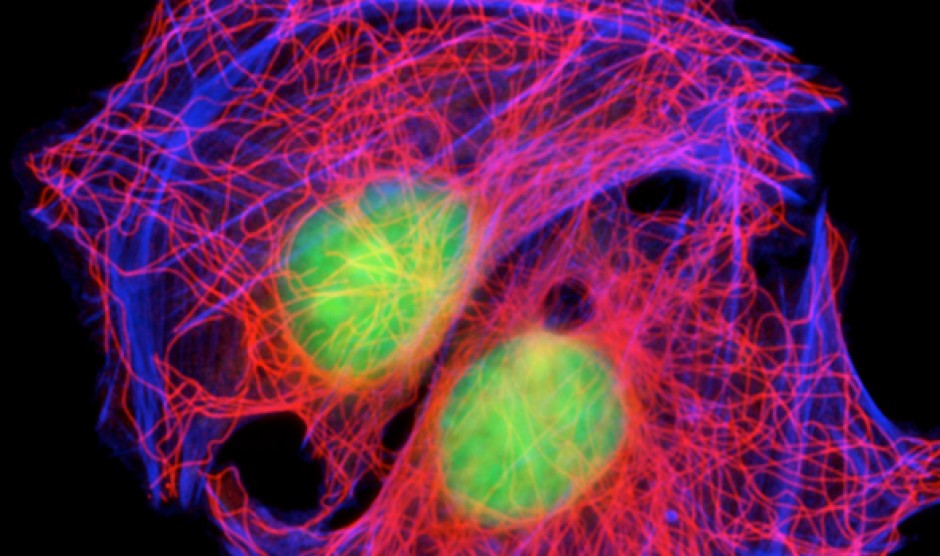Have you heard of a thing called intersex? It’s exactly what it sounds like: spanning between two different sexes. This means the chromosomes, gonads, and genitals aren’t distinct; it’s not dominantly male or female, but in fact an undifferentiated version. Boy or girl? We don’t know.
Mutations in sexual development are still a mystery for scientists. Researchers at the University of Geneva, however, are uncovering how we develop into males or females or how we don’t develop to either of those. The mechanisms that govern sexual development and the factors that are responsible are under investigation.
Ever heard of insulin? Chances are, you have, especially when it comes to diseases like diabetes.

INSULIN…don’t think it’s actually green 😉
Insulin is a hormone produced in the pancreas and is vital in regulating our carbohydrate intake and fat metabolism. It turns out that its function spans beyond this! When insulin and insulin growth factors, specifically IGF1 and IGF2 (Insulin Growth Factor 1 and 2) are absent during sex determination, the embryos that result are essentially sexless and are missing their adrenal glands as well. From this new insight into sexual development, the science world is hoping that this will eventually progress to improve “diagnosis and genetic counseling practices for individuals with disorders of sex development”.
Sexual development is a long process that begins with the mother’s egg and the father’s sperm and a little love. When the two fuse to create a zygote, the zygote will eventually divide and divide and differentiate to give rise to who we are today (isn’t pretty damn crazy to think we were once just one single cell? LIKE THAT IS S0 $ICK).

Sperm swarming the egg
During the fertilization process, the sperm donates either its X chromosome or its Y chromosome which will combine with the egg’s X chromosomes to either form a cell with an XX pair of chromosomes or an XY pair of chromosomes. XY = male and XX = female. At this point, the embryo’s sex is genetically determined, which will dictate the gonadal sex (whether ovaries or testes will be produced), and these gonads will then secrete specific hormones that cause the fetus to masculinize or feminize. Testosterone anyone? … I think I’ll keep with the estrogen for now thanks….lol
Now where do these insulin growth factors come into play during sexual development? Well reproduction isn’t isolated at all from metabolism and growth, the two functions that insulin has an effect on, and thus they have a big responsibility in dictating the production of a male or female. To see the effects that these hormones have on determining our sex, the researchers at the University of Geneva worked with mice whose receptors for insulin and the insulin growth factors were inactivated. Researchers discovered that during sex determination, the gonads produced were unable to develop into either the ovaries or the testes; without these growth factors ad insulin, we are sexless. Could you imagine not having a sex….? The societal effects and pressures, the personal fight, it’s all hard to really understand. And it’s hard to believe that this is rather common, where 1 newborn in every 3000 births have the sexless sex determination mutation.
Hopefully this research is leading us the way to finding out how we become boys and girls.
But will that matter in time?
